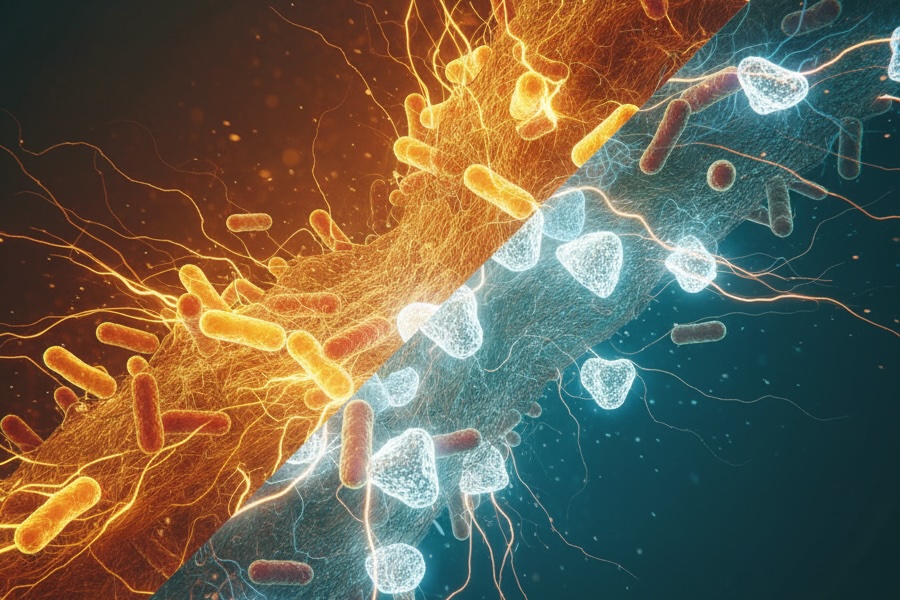
In a groundbreaking study, researchers from the College of Biological Sciences and the School of Dentistry have discovered a method to manipulate bacterial communication, potentially revolutionizing oral health. As bacteria develop resistance to antibiotics, this innovative approach offers a promising alternative to traditional treatments. The study, published in the journal npj Biofilms and Microbiomes, explores how altering bacterial “chatter” can prevent the formation of harmful dental plaque and maintain a healthy oral biome.
Bacteria are known for their adaptability, constantly evolving to survive in various environments. While some bacteria are harmful, many are essential for human health. The research team focused on the 700 species of bacteria residing in the human mouth, which communicate through a process known as quorum sensing. This communication involves special molecules called N-acyl homoserine lactones (AHLs).
Understanding Bacterial Communication
The researchers aimed to understand how mouth bacteria use quorum sensing and whether this process could be “hacked” to prevent plaque formation. Their findings suggest that by disrupting AHL signals with enzymes known as lactonases, it is possible to enrich health-associated dental plaque species. This discovery could pave the way for new treatments that maintain a healthy microbial population in the mouth.
“Dental plaque develops in a sequence, much like a forest ecosystem,” explained Mikael Elias, associate professor and senior author of the study. “Pioneer species like Streptococcus and Actinomyces are the initial settlers in simple communities – they’re generally harmless and associated with good oral health. Increasingly diverse late colonizers include the ‘red complex’ bacteria like Porphyromonas gingivalis, which are strongly linked to periodontal disease.”
Implications for Periodontal Disease
The study revealed that AHL signals produced by bacteria in aerobic environments (above the gumline) can be received by bacteria in anaerobic environments (beneath the gumline). By blocking these signals in aerobic conditions, researchers observed an increase in health-associated bacteria. Conversely, adding AHLs in anaerobic conditions promoted the growth of disease-associated bacteria.
“Quorum sensing may play very different roles above and below the gumline, which has major implications for how we approach treatment of periodontal diseases,” said lead author Rakesh Sikdar.
This research suggests that modifying dental plaque communities with enzymes could become a strategic tool in preventing periodontal disease. Rather than eliminating all oral bacteria, the goal would be to maintain a balanced microbial environment.
Future Research and Broader Applications
The next phase of research will investigate bacterial communication in different areas of the mouth and among patients with various stages of periodontal disease. Understanding these dynamics could lead to new preventative measures for periodontal disease and potentially other health issues related to microbiome imbalances.
Professor Elias expressed optimism about the broader applications of this research, stating, “Understanding how bacterial communities communicate and organize themselves may ultimately give us new tools to prevent periodontal disease—not by waging war on all oral bacteria, but by strategically maintaining a healthy microbial balance.”
The team hopes that this method could eventually form the basis for therapeutics used throughout the body, addressing microbiome dysbiosis in conditions such as certain types of cancer. The research was funded by the National Institutes of Health, highlighting its potential significance in the medical field.
This development follows growing concerns over antibiotic resistance and the need for innovative approaches to bacterial-related health issues. As scientists continue to explore the intricacies of bacterial communication, the potential for new, less invasive treatments becomes increasingly promising.







